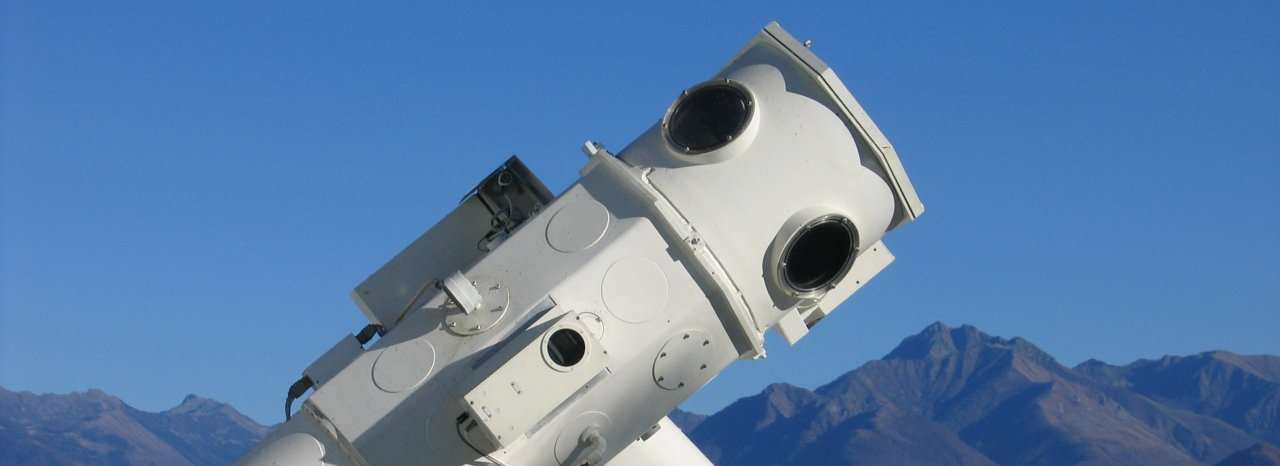USI Institutional Communication Service
(article published on USI institutional web site)
The Astrophysical Spectropolarimetry research project, led by Renzo Ramelli of the USI-affiliated Istituto ricerche solari Aldo e Cele Daccò (IRSOL), has been approved by the Swiss National Science Foundation (SNSF). The project aims to study the evolution and structure of the solar magnetic field, focusing on the formation of solar flares using modern equipment and innovative observation techniques.
Researchers from SUPSI, the FHNW (Fachhochschule Nordwestschweiz) and the KIS (Leibnitz-Institut für Sonnenphysik) are also participating in the project as partners.
Renzo Ramelli, what does the project consist of?
The research project will be conducted by IRSOL’s observational research group in collaboration with the other two groups dedicated to the theory and numerical simulations. The solar magnetic field will be studied using high-precision spectro-polarimetric observations that make it possible to trace the structure of the solar magnetic field in detail, establish its evolution and validate the theoretical models of the solar atmosphere developed in current research.
This allows a better understanding of manifestations of solar activity, such as the eleven-year solar cycle, flares or coronal mass ejections, in which magnetism plays a fundamental role. The phenomena studied can lead to the formation of solar storms, which, if particularly intense, can significantly impact the functioning of our technologies, interrupting radio telecommunications, damaging exposed electronic equipment and creating blackouts in electricity distribution networks.
What are the objectives of the study?
The main objective of the research is to study, with modern equipment and innovative observational techniques, the evolution and structure of the solar magnetic field on scales corresponding to the limit of the spatial resolution capabilities of modern solar telescopes. This will make it possible to address the debated issue of the solar dynamo, whose existence and characteristics have an enormous impact on solar and stellar physics, such as energy transport and the Sun’s energy balance.
The study results will lead to a better understanding of solar magnetism, providing helpful knowledge for improving predictive capabilities on solar storms.
The knowledge gained can also be reinvested in stellar astrophysics research. In addition, the spectropolarimetric instrumentation that will be improved may also have applications in other areas of research, such as an in-depth study of solar flares, taking advantage of the recent improvements in IRSOL instrumentation and the increased efficiency of the high-precision ZIMPOL polarimeter.
Which instruments will be used?
The spectro-polarimetric observations will be carried out with the ZIMPOL high-precision polarimeter that can reach a precision of 0.001% in units of fractional polarisation. The observations will be conducted with the Gregory Coudé Telescope (GCT) at IRSOL in Locarno and at Europe’s largest telescope GREGOR in Tenerife, where the ZIMPOL system is to be permanently installed. Measurements with GREGOR are critical when high spatial resolution plays an essential role in addressing scientific questions. The observations will also benefit from a new observation technique based on a combination of slow and fast modulation, which has just been developed and implemented at IRSOL as part of the SOLARNET H-2020 project. The technique drastically reduces systematic effects in polarisation measurements and allows unprecedented precision in absolute polarisation, which is a major advantage over other solar observatories. Our group has also successfully tested this technique in collaboration with KIS at GREGOR, boosting IRSOL to a leading role in the field.
For solar flare observations, the project foresees joint observations with the GCT, GREGOR and the Spectrometer/Telescope for Imaging X-rays (STIX) on board the Solar Orbiter.
The project also includes an improvement of the ZIMPOL spectropolarimeter in collaboration with the Department of Innovative Technologies (DTI) of SUPSI (Systems and Applied Electronics Institute).
What could the implications of this research at the national and international levels be?
This project will contribute to developing new techniques that can be exploited by the new generation of telescopes, such as the European Solar Telescope (EST), giving leverage to Switzerland to play an important role in the global scientific stage. This project will also foster collaborations within Switzerland’s growing solar physics community.
Among other goals, we aim to improve magnetic field diagnostic techniques that could increase the prediction capabilities of space weather events impacting the Earth and to compile a new version of the Second Solar Spectrum Atlas, which includes centre-to-limb variation and will become a further reference in the field.
With this project, we aim to retain a world leadership role in solar spectropolarimetry. The observing techniques we are developing are of interest to the new generation of solar telescopes, such as the European Solar Telescope (EST). IRSOL already participates with its know-how in polarimetry in the preparatory activities of the EST project (for instance, in the H2020-SOLARNET with the development of the observing technique that combines fast and slow modulation to achieve an unprecedented absolute polarimetric precision). Thanks to IRSOL, Swiss institutes and companies have access to these important projects.
The joint flare observing programme with the FHNW will open new synergies within the growing Swiss solar science community. It will also increase the scientific output of the Solar Orbiter mission in Switzerland.
We also believe that this project offers appealing educational opportunities. PhD students and a post-doc will be able to pursue a fascinating and original research project. Based on experience from past years, the topics also attract undergraduate students to carry out small, well-defined sub-projects. Interesting technical projects can also be assigned to students from universities of applied sciences. Many exciting project-related topics also lend themselves to dissemination activities and will be included in the Agora outreach project ‘The Sun’, recently approved for funding by the SNSF. This Agora project will include an exhibition at USI L’Ideatorio.


